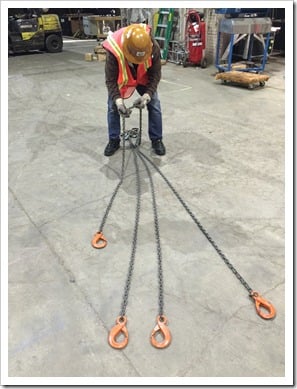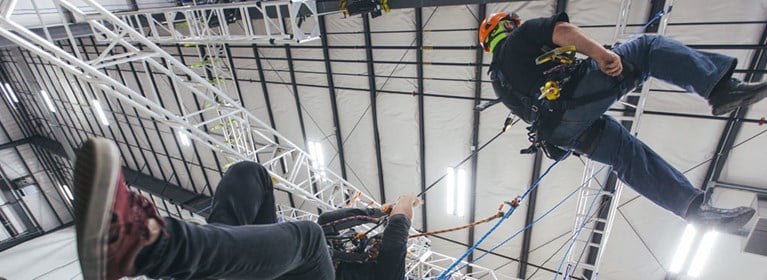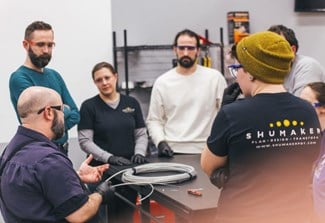A Chain Sling Question from the Mining Industry
Mining, Petroleum and Gas |
Rigging |
Safety and Training |
By Columbus McKinnon Training |
Nov 20, 2016

Here's a question from Adam, a mobile crane operator working in the mining industry, who regards proper rigging equipment and practices as a major safety priority:
“We have a 1-inch GR80 chain sling, 30 feet in length that is around ten years old and in good condition, although there is inner link wear throughout the sling at its bearing points. The narrowest measurement in link diameter at any point was .945″, which is well away from removal criteria. No components in the sling show any evidence of a stretch condition, and the sling has not been subjected to overload to the best of our knowledge, though I cannot guarantee that.
“The reach of the sling is approximately four inches longer than its tag indicates. According to my calculations, this stretch is due to the contact wear in each link. The chain moves freely and there is no binding or restriction of movement. Is this legitimate? If so, does the tag need to be replaced or modified to indicate its current length? Our inspections have always been completed by a company assigned employee.”
Response from our Columbus McKinnon Training Team:
Thank you for reaching out to us. For your reference, I have included a section on alloy rigging chain inspection from our Columbus McKinnon rigging catalog here. Be sure to do a link-by-link inspection and follow the rejection criteria from OSHA 1910.184 and ASME B30.9. Be sure there are no stretched links. Reference the “Allowable Chain Wear Allowance tables” from the manufacturer and ASME B30.9.
Not knowing your exact configuration, I will use a standard DOS 1-inch grade 80 x 30’ reach sling as an example. If we just isolated the chain (taking out the master link, coupling links and hooks) you have approximately 106 links of chain. If you determined the minimum thickness to be 0.945” at the bearing points, that is approx. 0.055” of wear from the nominal dimension. 1” grade 80 chain has a pitch length of approx. 3.07” (dimension from the top inner link radius to the lower inner link radius) Let’s assume that wear occurred at both ends of the chain link. The pitch length would increase by 0.11”. Over the entire chain length you could see an increase in reach of approx. 11.66” (0.11” x 106 = 11.66”)
As long as there are no stretched links or deformation this would be acceptable. There is no rejection criteria for reach other than stretch. Wear is not stretch.
There is also no statement in 1910.184 and ASME B30.9 to replace the tag in this event with the correct reach.
A good practice would be to retag the sling with the current reach. The new tag would be considered a repair so your company’s name or initials would have to be on the tag. A load test would not be required. Lastly, lubricating the chain is an excellent way to minimize wear.
North America - EN






